This post may contain affiliate links. Please read our disclosure policy.
This gluten free bread flour is the blend that works best to make bread dough that behaves the most like you remember. Make shaped breads with a taste you’ll love.
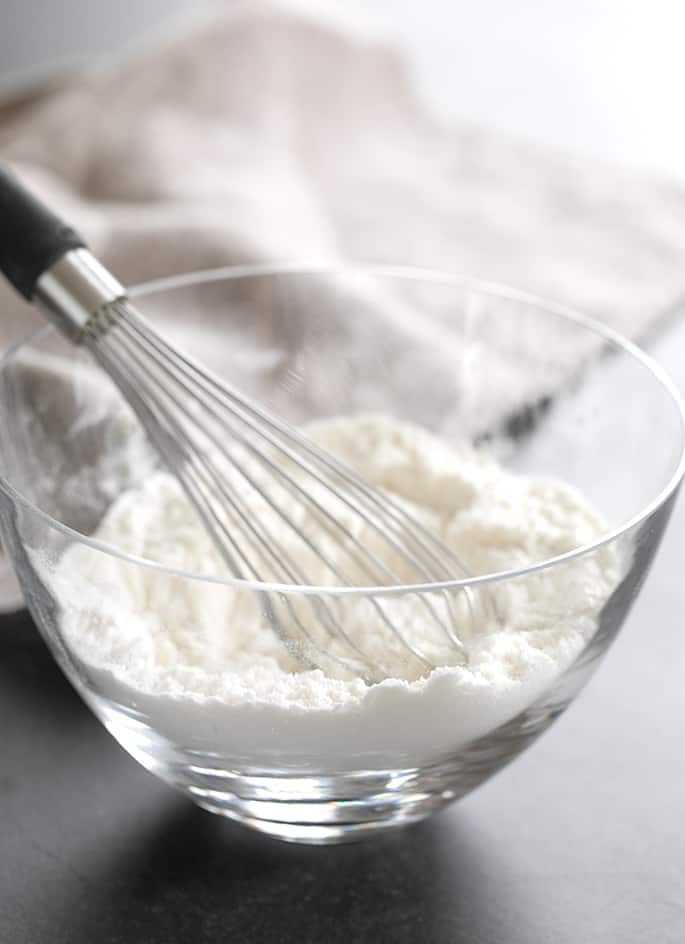
Helpful notes on ingredients in gluten free bread flour
My gluten free bread flour, first introduced in my bread cookbook, GFOAS Bakes Bread, in 2013, is made by combining 3 ingredients. They are whey protein isolate, Expandex or Ultratex 3 modified tapioca starch, and a strong all purpose gluten free flour, and together they will open up the universe of what is possible with gluten free yeast bread.
The right all purpose gluten free flour blend
I began using Better Batter all purpose gluten free flour many years ago. It has superfine rice flour, so it's never gritty and always combines properly with other ingredients. It's properly balanced to create baked goods that brown, rise, and taste like they should.
I know that not everyone can or is willing to buy Better Batter. That's why I created a “mock” Better Batter recipe, for you to make your own approximation that will work in every recipe I create that calls for an all purpose gluten free flour.
Since that mock Better Batter blend calls for quite a number of ingredients, I have also tested my bread flour using my “Make It Simpler All Purpose Gluten Free Flour” blend. That blend contains only 4 ingredients.
Although I do urge you to use Better Batter or create the mock blend, the bread flour will work with the Make It Simpler blend. Suddenly, I find myself really wishing I had come up with a better name for that simpler blend.
Whey protein isolate
Whey protein isolate is an unflavored protein powder that is nearly 100% protein. It is distinct from whey protein concentrate, which has more fillers, less protein.
To make bread flour, you'll need whey protein isolate. Each 28 grams (1 ounce) of whey protein isolate should have about 25 grams of protein. Just check the label.
Be sure you are using an unflavored protein. Whey protein isolate is most often used by bodybuilders who need tons of protein in their diets.
Since they often blend theirs into shakes, there are plenty of flavored varieties. You do not want any of those flavors. Just the protein, please.
I like Opportuniteas brand grass-fed whey protein isolate (that's an affiliate link but please shop around). NOW Foods brand also makes an unflavored whey protein isolate, but not everyone is comfortable that it is strictly gluten free.
Modified tapioca starch
Expandex is a chemically modified tapioca starch that helps create amazing stretch and chew to gluten free breads. Since it is chemically (not genetically) modified, it is not the same as and cannot be replaced with regular tapioca starch/flour.
When I first started publishing recipes using it in 2013, Expandex became very difficult to find very quickly. Since then, it's become more widely used in gluten free baking. With that, it's become more widely available.
I keep an active list of sources for purchasing modified tapioca starch that I will link to below. Since Expandex tends to be more difficult to find outside the U.S., I've learned how to use a similar product called Ultratex 3.
Ultratex 3 appears to me to be about 3 times as strong as Expandex. To use Ultratex 3 in this blend instead of Expandex, I've modified the quantities of all 3 ingredients. I provide all of the numbers below.
Why bake recipes with gluten free bread flour?
Baking recipes that call for this gluten free bread flour is an experience much more like what you might expect when you're baking conventional yeast bread. The dough isn't overly wet like the batter-style of bread.
The batter-style sort of gluten free bread dough doesn’t look or behave anything like conventional yeast bread when it’s raw or even when it’s baking. It has very often been described as “cookie dough.”
If you've ever made a batter-style gluten free bread, which absolutely still has its place in my heart, the moment you make this bread dough you'll see how different it is. You can manipulate it with your hands without moistening them first.
Better texture, better taste, more possibilities
The breads you'll make with this gluten free bread flour appear different when raw, and taste different when baked. They can be made without enrichments like eggs and butter, because they have internal structure more like conventional bread.
If you're egg-free, this can be particularly useful. Only the breads that are naturally enriched, like brioche, will still need to be made with eggs and butter.
If you have previous experience shaping conventional yeast bread dough, all of that will come in quite handy here. With this blend, working with gluten free yeast bread dough does not have to mean weepy mounds of wet dough.
And unlike gluten free yeast bread of the past, most of these rolls have two rises. That means that the dough is easier to handle still, and there is even some flavor development in the yeast.
What breads can I make with this flour?
Below are some of the many bread recipes on the blog that are designed to be made using this recipe for gluten free bread flour. There are others, too, and of course a whole book of gluten free bread you can buy.
But you don't have to buy the book. I'm not even linking to it here. You can simply use the gluten free bread recipes here on the blog that use that blend.
Below are some of my favorite gluten free bread flour recipes. Two of them are reprinted recipes from GFOAS Bakes Bread. The rest I created after the book was already published, to share here on the blog. I love them all equally. ❤️
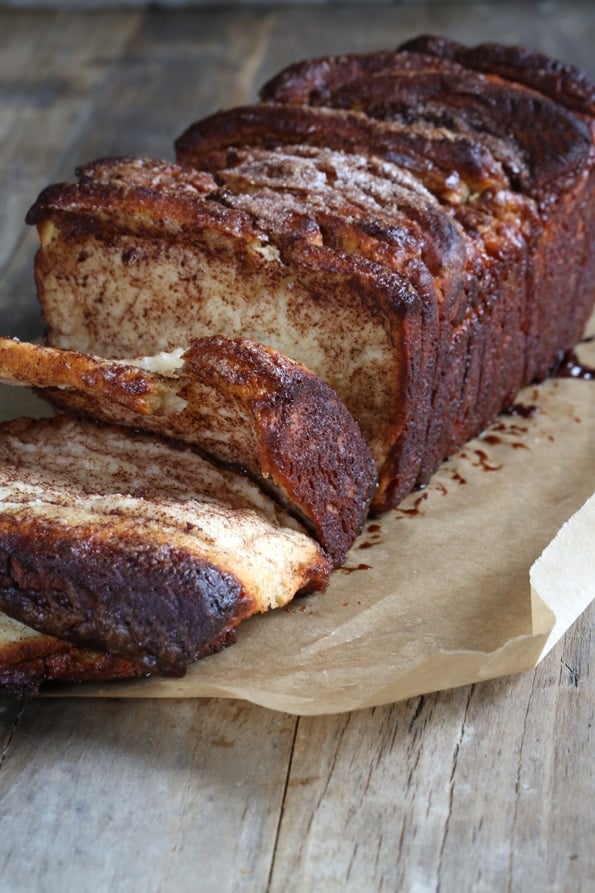
This gluten free chocolate pull-apart bread was created when the Internet was full of pull-apart bread recipes. I hate it when we can't bake along, so I shared a way for us to do it, too. Make it chocolate, or a cinnamon-sugar version.

These gluten free Texas Roadhouse-style rolls are tender, light and fluffy, but they’re safely gluten free. Let that bread basket pass you by and try these instead!

Warm and gooey gluten free Nutella bread, filled with everyone’s favorite hazelnut spread. Braided for a gorgeous presentation, it’s dressed to impress!
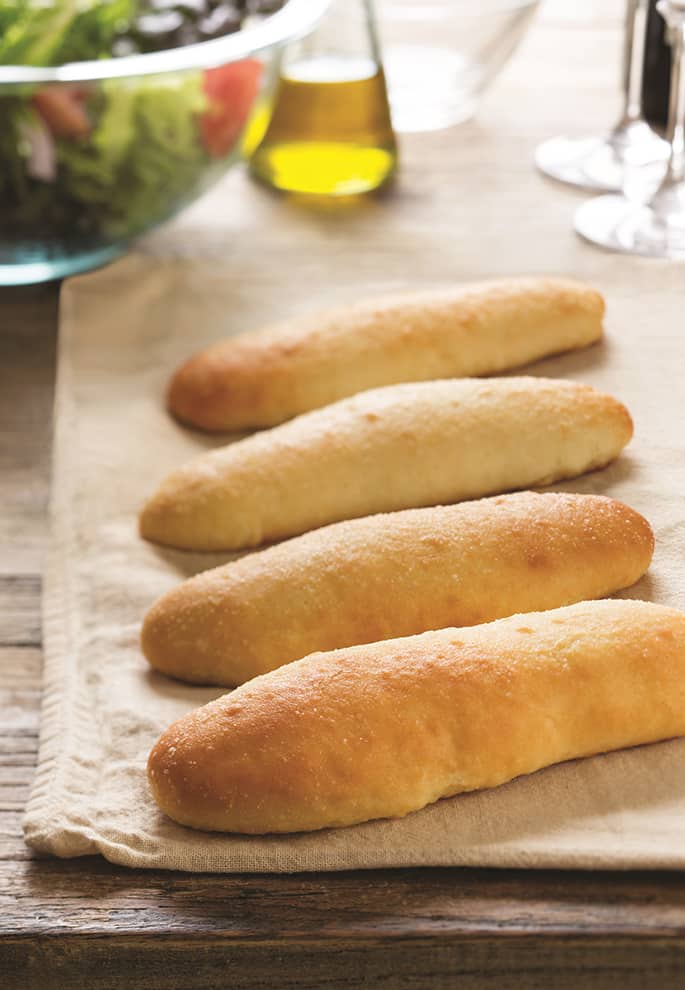
These soft gluten free breadsticks are a homemade version of the famous Olive Garden breadsticks. Fluffy and soft inside, with a thin, almost crispy layer outside, and covered in garlic butter.
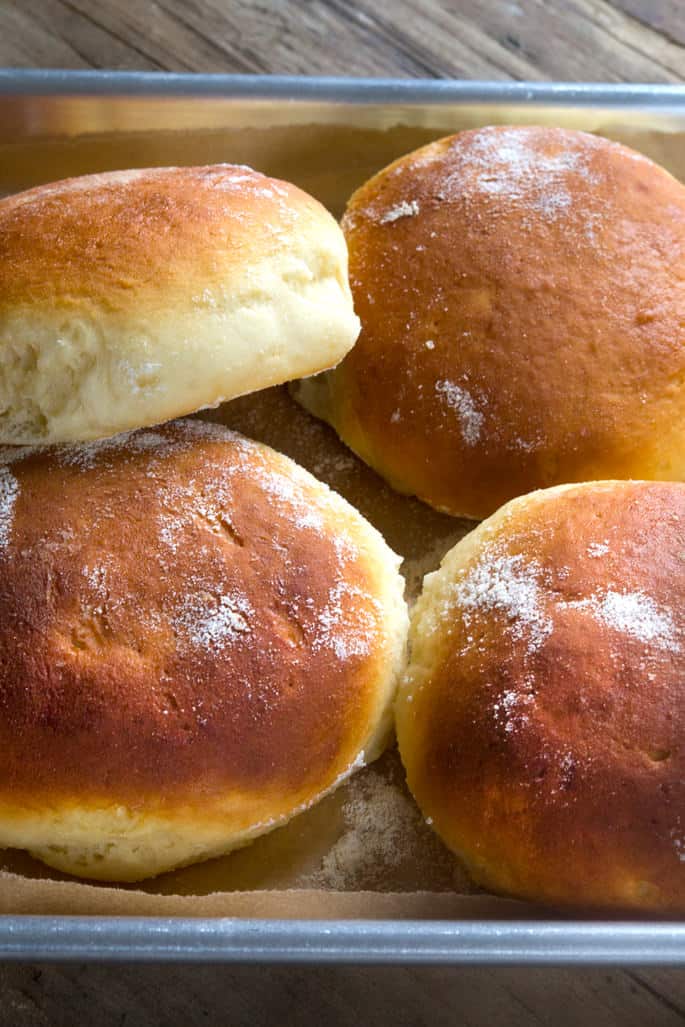
This recipe for soft and tender gluten free Hawaiian rolls makes the perfect gluten free bread for any occasion—for everything from dinner rolls to burger buns. This recipe also has some videos of me handling the bread dough, which many find useful in getting used to baking with gluten free bread flour.

You know those super squishy, soft-crusted rolls from Subway? Well, I made soft gluten free sandwich rolls in just that style.
I think Subway actually carries packaged gluten free bread now, but you know it's not the same. And I'm afraid of all the cross-contamination worries.
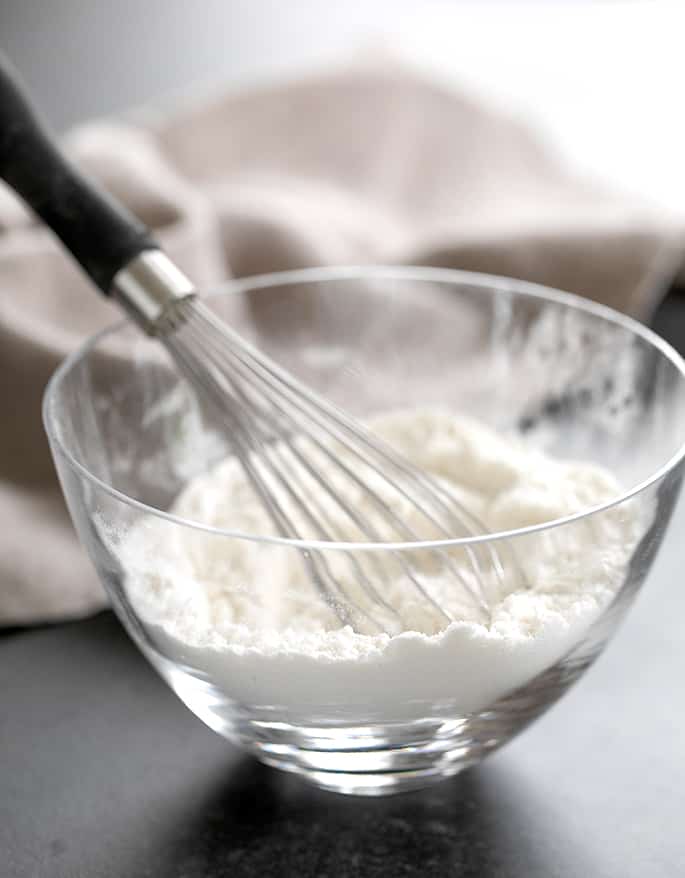
Gluten free bread flour: Ingredients and substitutions
Can you make gluten free bread flour without dairy?
Not really. Whey protein isolate is the only protein powder that truly works to make my gluten free bread flour. Only casein (the protein in milk) behaves this much like gluten does in baking.
I have had limited success with rice protein isolate and pea protein isolate in place of whey protein isolate, but it just isn't quite the same at all. If you do use one of those protein powders to make the blend dairy-free, you will need to add 50% more water to the bread recipe.
That will create more of a batter-style gluten free bread recipe that just isn't as easy to shape. I think you're better off using our older style of gluten free bread recipe, like our gluten free white sandwich bread.
Those old school recipes didn't just stop working because I created a recipe for gluten free bread flour that calls for different recipes. In fact, our gluten free naan bread is made in that style, and it's one of the most popular recipes on the blog.
Can you make gluten free bread flour without potatoes?
Maybe. Avoiding nightshades in gluten free baking can be difficult. Better Batter uses two kinds of potato products: potato starch, and potato flour.
Although there is no substitute for potato flour, you can usually substitute potato starch. I find that arrowroot works well. So does cornstarch.
If you need to make this bread flour nightshade-free, try using the Make It Simpler all purpose gluten free flour (there's that name again!). It doesn't call for potato flour, only potato starch which you should be able to replace.
Can you make gluten free bread flour without modified tapioca starch?
No. You must use modified tapioca starch in this bread flour blend for it to work at all. You can use either Expandex and Ultratex 3 in the amounts and in the way described in the recipe below.
I keep a current list of online sources for Expandex and Ultratex 3 in the United States, Australia, the U.K., and Canada. Ultratex 3 seems to be more widely available outside the U.S. than does Expandex.
Gluten Free Bread Flour

Equipment
Ingredients
For bread flour with Expandex
- 100 grams all purpose gluten free flour blend, (71% of total) (See Recipe Notes)
- 25 grams unflavored whey protein isolate, (18% of total)
- 15 grams Expandex modified tapioca starch, (11% of total)
For bread flour with Ultratex 3
- 105 grams all purpose gluten free flour blend , (75% of total) (See Recipe Notes)
- 30 grams unflavored whey protein isolate, (21% of total)
- 5 grams Ultratex 3, (4% of total)
Instructions
How to use a kitchen scale.
- To make a gluten free flour blend of any kind, you will need a simple digital kitchen scale.
- Activate the scale by pressing the power button and allowing it to fully turn on.
- With nothing weighing it down, it will read “0”. You will be weighing in grams, which may not be the default unit of measurement. Switch to grams if necessary by pressing the appropriate button on your scale.
- Place a container large enough to hold however much flour you intend to create on the scale. Press “tare” again to zero out the weight of the container.
- Add your flour(s) one at a time to the bowl until the display reads the right number of grams of that flour. You may add the first ingredient somewhat carelessly since you can remove some flour if you add too much.
- Press the “tare” button to zero out the weight of that flour. Add the rest of the ingredients, pressing “tare” in between. Whisk and store.
To make bread flour.
- If you are using Better Batter as purchased or you have already created my mock Better Batter blend using the method described above, your task is quite simple.
- Follow the instructions above to add the appropriate amount of Better Batter, tare, appropriate amount of whey protein isolate, tare, and the appropriate amount of Expandex or Ultratex 3.
- Place the blend in a container with a tight-fitting lid, whisk to combine well, and place in a well-sealed container in a dark, dry location.
- If you have to first create mock Better Batter or my Make It Simpler blend described above, first do that, making as many cups as you would like by multiplying every ingredient in the list by as many cups as you would like to create and store.
For multiples.
- To make multiple cups of bread flour, simply multiply each ingredient by the number of cups. Follow the method above, and store as directed.
- Use the bread flour in any of the “new” gluten free bread recipes on the blog or in GFOAS Bakes Bread.
Video
Notes
Nutrition information is automatically calculated, so should only be used as an approximation.

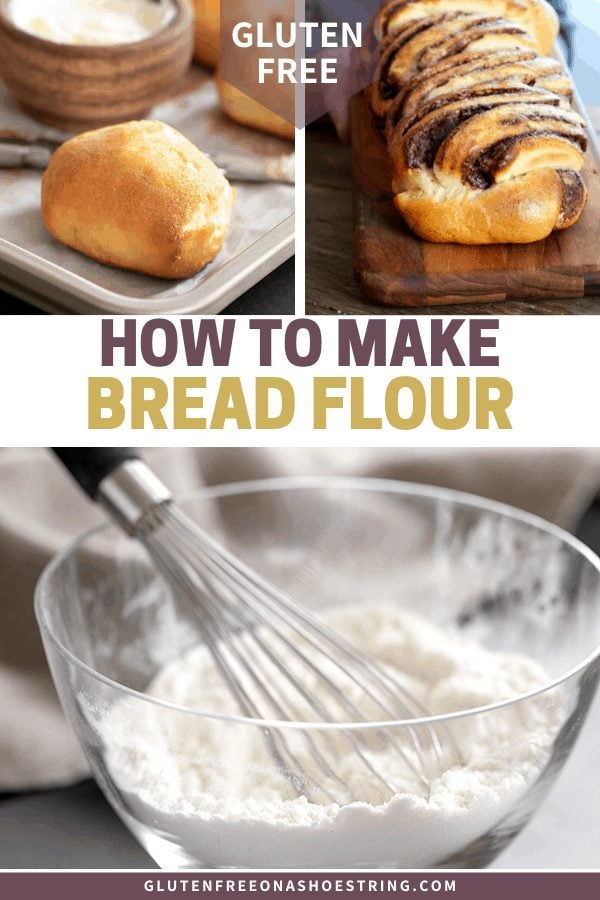
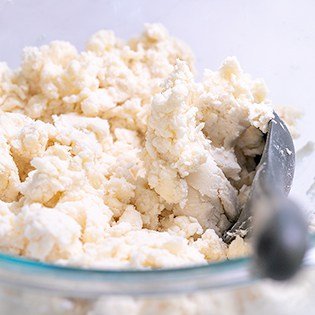

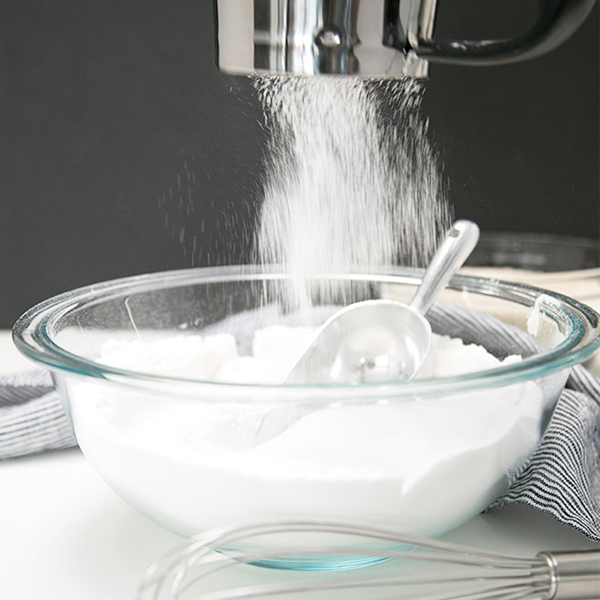
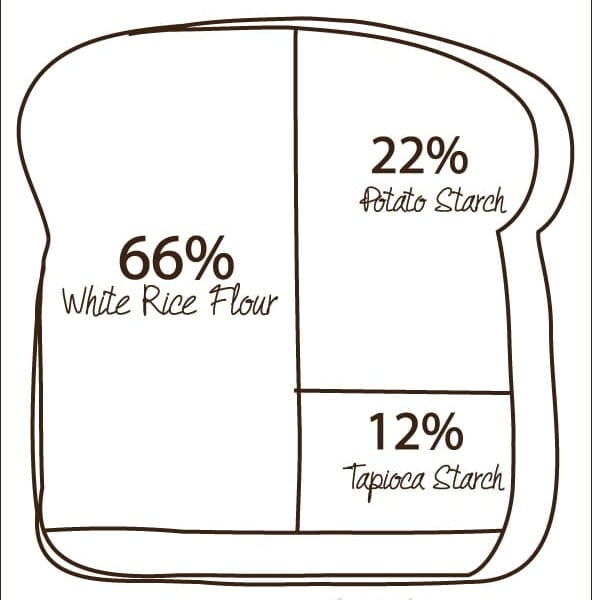









I just purchased the ingredients for the gluten-free bread flour blend using Better Batter. Are there certain bread recipes that work best with this flour blend? Thanks for all your helpful information.
Yes, Mary! There are many listed in this very post, under the heading “What breads can I make with this flour?”
Nicole,
I am getting ready to purchase the items needed to make your Mock Better Batter Flour, and am wondering where I can find the Pure Powdered Pectin. Is there a certain brand I should look for?
Thanks,
Debbie
Hi, Debbie,
You can find more information about the mock Better Batter (and the other blends) on the gluten free flour blends page. I buy Pomona brand pectin, and you toss the calcium packet!
Hello — Can I use Cup4Cup instead of Better Batter when making the all purpose GF bread flour?
No, I don’t recommend that. Only one of the two blends specified here, Lynn.
Hi Nicole,
Thanks for the great reciepes!
I got your first book about a week ago but only after buying 16kg of Doves Farm White Bread Flour here in the UK, but sadly I have no idea what the % of each flower/starch/zanthan gum might be. I have asked them but had no reply in over 2 weeks, so I guess that would be a NO.
Any thoughts please.
Hi, Gary, they won’t tell you the exact percentages of the ingredients in their blend. That would definitely be proprietary. I recommend you join my Gluten Free on a Shoestring Community group on Facebook (just answer the questions honestly and you’ll be admitted) for help using a UK blend like Dove’s. Or you could always build your own blend using my mock recipes.
Thanks for letting me know. I am going to make them today with your Simpler blend and see how that works out. My son and husband are still eating the other ones so they cant be that bad but better would be better lol Thanks
Ok….never mind my potato dilemma….I saw the post below mine and did a double take. Thanks so much. I will try again with that blend and see if they are not as dense. Any other suggestions? I did weigh the ingredients so there would not be the compacting issue with using a measuring cup. Much appreciated Nicole!
I’m afraid that Namaste will not work in my recipes. It’s just not a well-balanced blend and it’s the reason for your poor results, Janice!
Just made your bagel recipe. They look fantastic and taste is ok but heavy. I used Nameste gluten free flour and added the expanded tapioca and the whey isolate. Are they heavy because I didn’t use your blend? My issue is my husband is allergic to potatoes. Nameste is the only flour blend that does not contain potato starch. Any thoughts on how to make them a bit less dense? They looked unbelievable!! I wish I could share a picture.
Hi Nicole,
Thank you so much for the potato substitute info. I had inquired about this in an email as we have loved baking your breads but my son is having issues with potato. I have had some success with your mock better batter recipe but subbing arrowroot for potato starch and cassava flour for potato flour. I’m still experimenting but for the most part we have had success. I might go a little lighter on the amount of cassava since at times I’ve had rising issues/dense loafs. Thank you for all you do! My son and I are huge fans of your work!
Hi, Kelly, You’re very welcome. I’m afraid I really don’t recommend cassava flour as a substitute for potato flour. I would use the Better Than Cup4Cup blend for your regular all purpose gluten free flour blend, and use arrowroot in place of potato starch. To make the bread flour, use the Make It Simpler blend, again using arrowroot in place of potato starch. There really is no substitute for potato flour, so I recommend you avoid it in this way.
I want to make bread sticks. I’m using Better Batter’s all-purpose flour mix. I’m new to baking breads, so I’m not understanding why the added whey protein isolate & Expandex or Ultratex 3. Better Batter has a recipe for bread sticks that doesn’t include these 2 ingredients. How will each recipe turn out differently? Is there a bread recipe (or several) you’d suggest for bread beginners & for people with arthritis in hands (little kneading)? Thank you for your generosity in developing so many great recipes! I do appreciate your hard work!
Hi, Suzanne, I’m afraid I can’t speak to Better Batter’s recipes, since I didn’t develop them myself. You may like these yeast free gluten free soft breadsticks, since the recipe is so simple, and doesn’t contain yeast.
Well…i just love your generous heart…thank you for sharing all of this Nicole… you are a blessing!